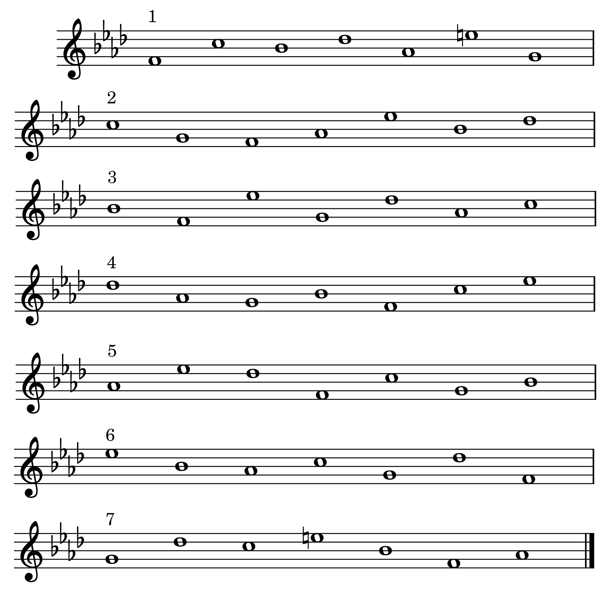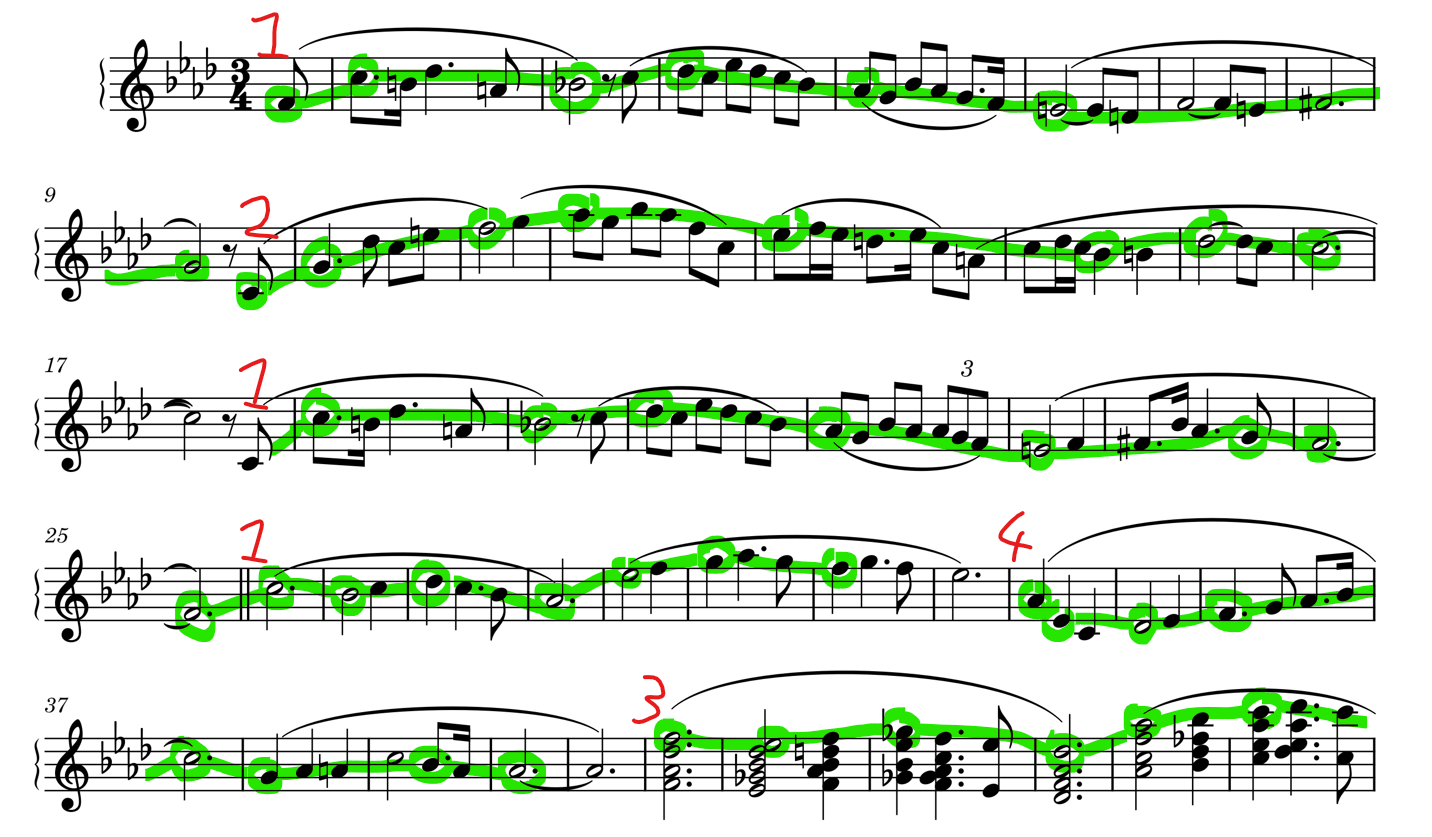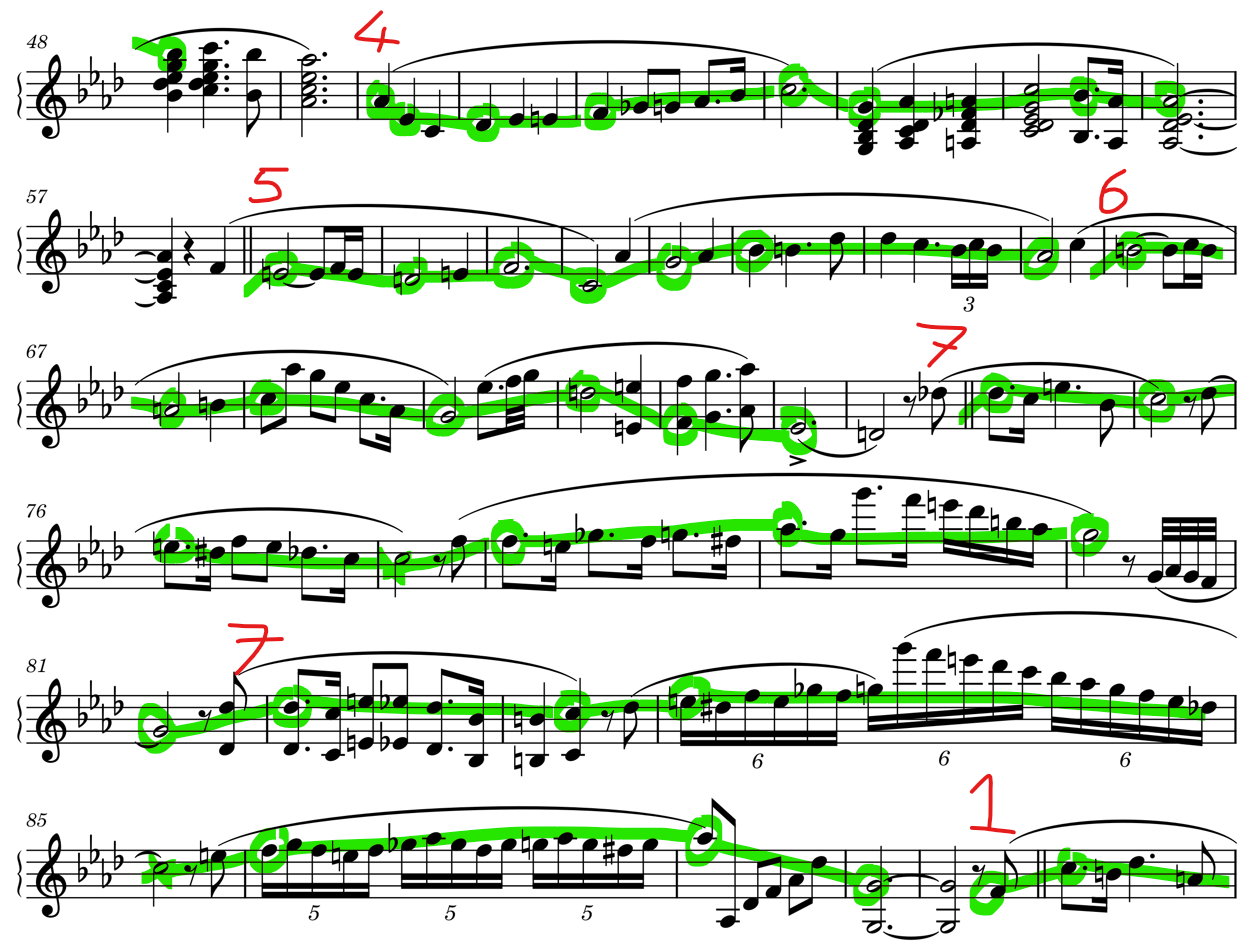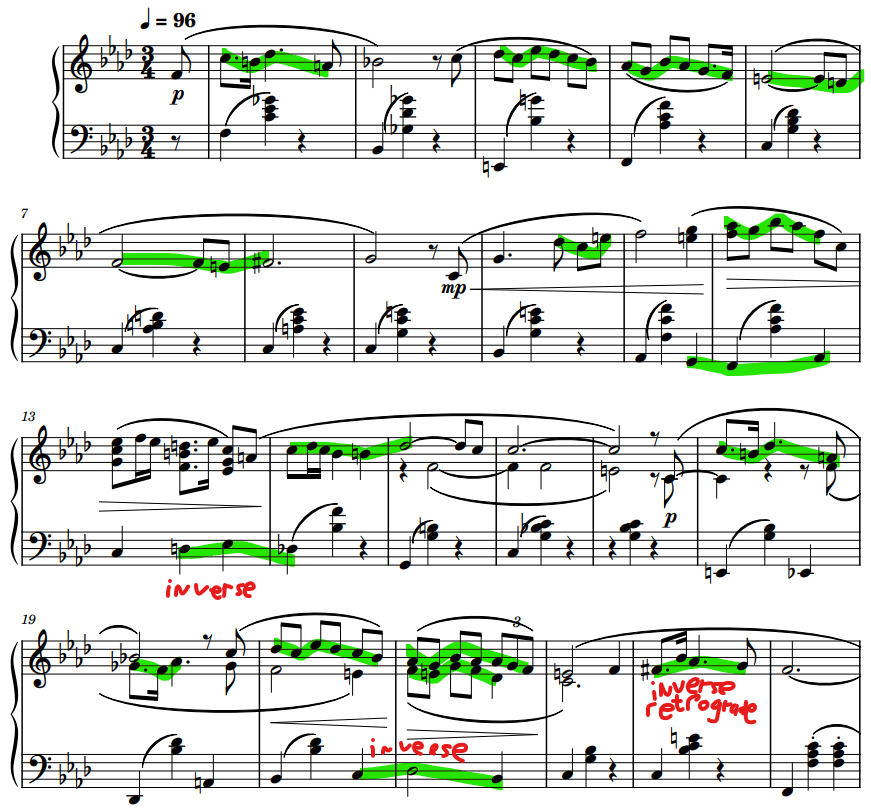The Mazurka:
Tonal serialism
I’ve used what I dub “tonal serialism” for this piece. Rather than using a 12 note tone row with all semitones of the octave, as is customary for regular serialism, I’ve used a row of 7 distinct diatonic pitches, without specifying any accidentals, allowing it to be easily used in a tonal context. I’ve used the series in the melody only, allowing the harmony the flow freely, accompanying the melody.
Using tonal serialism resulted in great melodic writing. By visiting all 7 pitches of a key before returning to the first pitch again, the melody maintains the listener’s interest, because every new pitch is one that wasn’t heard before in a while.
The tone row

I’ve used the following tone row in F minor. It has a few interesting properties which will be layed out.

Firstly, you might have noticed the wedge shapedness of it. Ignoring the F at the beginning, every even note moves up by a step and every odd note moves down by a step. This results in two opposite moving lines, both moving back to the tonic F.

Secondly, the intervals of each note compared to the root F appear in a structured way. We start with a fourth and a fifth, which are inversions of eachother, then a sixth and a third, which are also inversions, then a second and a seventh, again inversions. The dissonance of these intervals is increasing as we move along the tone row.

Thirdly, the interval of each note to the next also has a structure to it. Besides the initial fifth up, we visit all diatonic intervals within the octave from small to large. A second down, a third up, a fourth down, a fifth up, a sixth down and a seventh up back to the initial F. Having the melodic leaps vary in interval everytime adds to keeping the melody interesting.

Finally, the tone row contains a motive which I’ve used throughout the piece. The motive is a zigzag pattern starting from the C and ending on the A flat. The same motive occurs in retrograde inversion from the A flat back to the tonic F. I will show later how I’ve employed this motive in different places.
Permutations of the tone row
I’ve not used the tone row in inversion or in retrograde. Due to the symmetry of this particular tone row, that wouldn’t have made much of a difference. The only type of permutation I have used is starting the tone row at different starting points in the scale. I’ve used all 7 possible permutations of this form.

To number these permutations, I’ve used number of the starting note of the permutation within the original tone row. So series 1 is the original series starting on F, series 2 starts on C, series 3 starts on B flat, and so on.
Structure of the piece
The piece is structured around the series’ in the melody. No two series’ occur at the same time. Every section of the piece is built from 2 to 4 instances of the series. The first section appears again in the end, slightly varied.
| Section | A | B | C | D | A' |
|---|---|---|---|---|---|
| Permutations | 1, 2, 1 | 1, 4, 3, 4 | 5, 6 | 7, 7 | 1, 2, 1 |
| Key | F minor | A major | Transitional | C phrygian dominant | F minor |
Construction of the melody
The melody uses the notes of the tone row as its guiding notes. Generally, each pitch of the tone row takes 1 or 2 bars of music. I’ve used neighbor notes, passing notes, suspensions and other embellishments to enrich the melody. See below how this works out in section A to D.


Besides using the series to guide the broad motion of the melody, I’ve also used the main motive, extracted from the series, to determine the details of the melody. See below the first bars of music with this motive highlighted.

Conclusion
Using tonal serialism to compose a piece was an enlightening experience. It was surprisignly easy to compose the whole structure and melody of the piece in one go on paper, using only my “inner ear” to sanity-check it. Composing the harmony wasn’t difficult either, using basic counterpoint rules to compose the bass against the melody, and adding the full chords afterwards. Using this very efficient way to compose, with most of the decisions being made through the series, I was able to compose the complete piece in one evening. All in all I think the process was similar to baroque and classical counterpoint writing, starting out with whole and half note counterpoint between the melody and the bass, and then fleshing out the details. I can imagine some very prolific composers like Bach and Mozart using similar processes to quickly generate compositions.